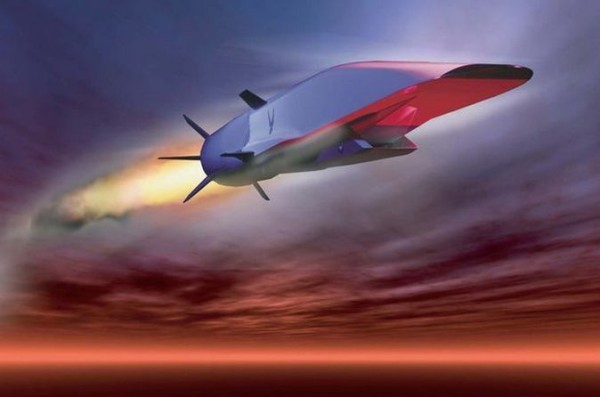DARPA, the U.S. Air Force, NASA, Boeing, and Pratt & Whitney tested a new hypersonic aircraft X-51A Waverider on 14 August that was supposed to travel at a speed of 4,500 mph, six times faster than sound. But the U.S. Air Force has said on 15 August, Wednesday that the test flight of unmanned vehicle WaveRider jet ended in failure before its hypersonic engine had fired up.
The plan was that a B52 bomber will carry the hypersonic aircraft X-51A Waverider 50,000 feet above the Pacific Ocean, will drop the X-51A Waverider after reaching that height and the engines of X-51A Waverider will fire up and will start its test journey. Here is an animated video of how that test flight was supposed to be.
On 15 August, the B52 bomber successfully launched from Point Mugu, California along with X-51A Waverider. The Waverider separated from the B-52 at 11:36 am local time (1836 GMT) over Point Mugu naval sea range. But approximate 15 seconds later before the WaveRider’s hypersonic ‘scramjet’ engine even had got a chance to fire up, a problem with one of the aircraft’s control fins occurred. Hence, the plane lost its control and subsequently crashed in the ocean.
Here’s the Air Force’s statement.
The X-51A Waverider successfully launched from an Air Force B-52 bomber over Point Mugu Naval Air Warfare Center Sea Range Aug. 14 at approximately 11:36 a.m. PST.
The X-51 safely separated from the B-52 and the rocket booster fired as planned. However after 16 seconds, a fault was identified with one of the cruiser control fins. Once the X-51 separated from the rocket booster, approximately 15 seconds later, the cruiser was not able to maintain control due to the faulty control fin and was lost.
In a statement on Wednesday to the press, the Air Force Research Laboratory’s X–51A program manager Charlie Brink said, “It is unfortunate that a problem with this subsystem caused a termination before we could light the scramjet engine. All our data showed we had created the right conditions for engine ignition and we were very hopeful to meet our test objectives.”
This isn’t the first time a Waverider’s test flight has failed to go according to plan. Last year in June, a Waverider engine was forced to shut down due to an airflow problem. After the failure, the future of the WaveRider program isn’t clear. Programme officials will now have to evaluate exactly what went wrong.
Source : Aviation Week
Thanks To : Digital Trends
[ttjad keyword=”hot”]




I don’t suppose they have a recovery system for the aircraft – parachute deployment, inflatable floatation pack? Or did they just lose it into the sea? I suppose it *is* a 2.1 Billion Dollar project – they can “afford” to lose a few. 🙁
And the aft stage too.
The jet was created to be destroyed. So, why would NASA and Pentagon spend extra money to recover them?@seventhseal:disqus
Ha ha Ha ….